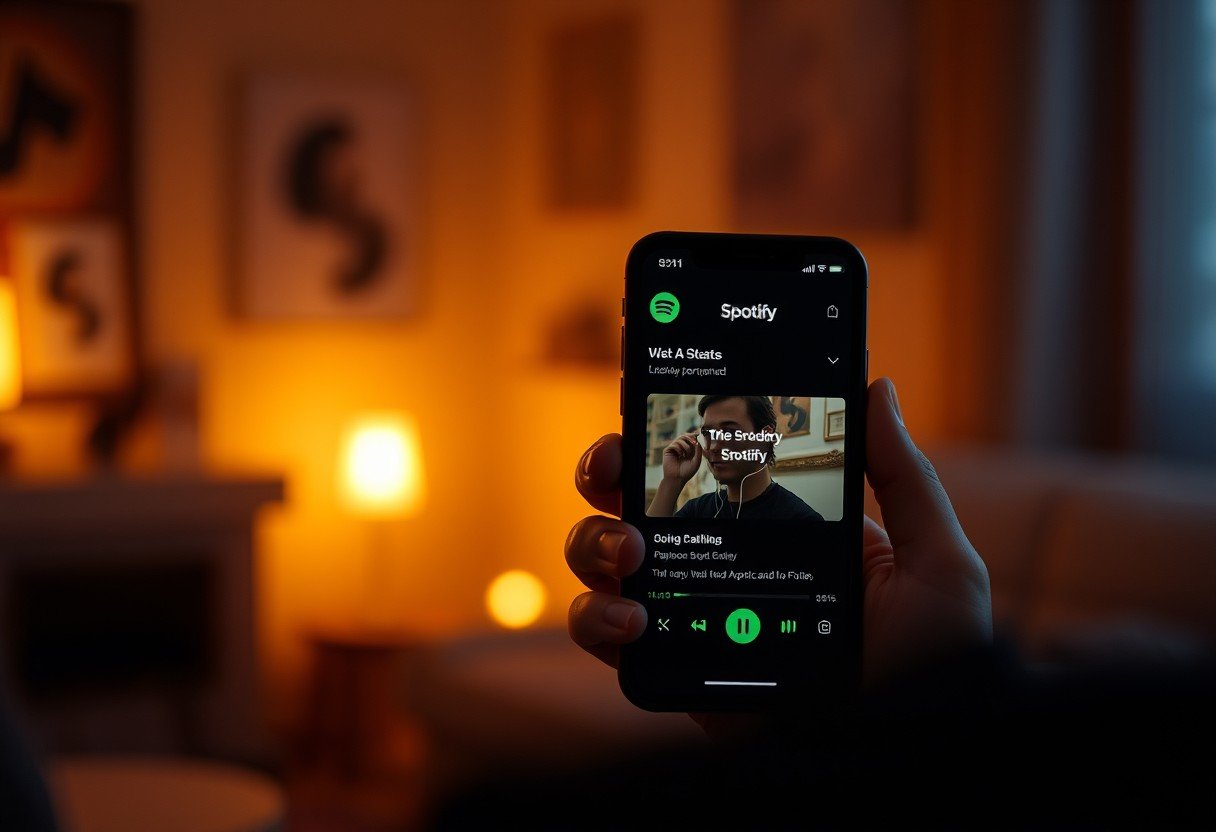Spotify shows lyrics inside the app, but they are not always right. Here is what the lyrics are, where they come from, how they get matched, when errors appear, who edits them, and why mistakes happen. Use this guide to understand the problem and learn simple fixes that improve your listening.
Where Spotify gets lyrics and how that affects accuracy
Most lyrics on Spotify come from partners like Musixmatch and music publishers. These sources mix official texts, editor reviews, and community edits. If the source is wrong, the lyric on your screen will be wrong too.
Matching also depends on track metadata. If the title, artist, or version tag does not match the lyrics database, the app may pull the wrong text.
- Publisher feeds can be slow to update after a new edit or remix.
- Crowdsourced lines may include typos, slang guesses, or misheard words.
- Metadata like live, clean, radio edit, or remix can confuse matching.
- Regional catalogs change which version is available to you.
This is why the same song can show different lyrics across countries or even across devices. The pipeline is only as accurate as the source and the match.
When sync fails and the words appear at the wrong time
Real time lyrics use time stamps that line up each line with the audio. If time stamps are off by a few seconds, the words feel late or early.
Version drift makes this worse. A live cut, sped up track, or remaster can shift timing so the old time stamps no longer fit.
| Cause | What you see | Why it happens | Quick fix |
|---|---|---|---|
| Wrong version match | Correct words, bad timing | Time stamps from another release | Open the main single, not a remix or live cut |
| Bad time coding | Lines jump or lag | Human error in lyric syncing | Report the sync issue inside the app |
| Metadata mismatch | Different song lines appear | Title and ID do not match the lyric file | Search the track and pick the top verified version |
Small timing errors break the flow more than small word errors. If the song feels off, try a different release or report the sync so it can be retimed.
Who edits lyrics and why user input can help or hurt
Editors and fans submit lyrics through partner platforms. Community help is powerful, especially for indie tracks or non English songs.
- Fans fix typos and fill gaps that publishers miss.
- Native speakers improve slang, dialect, and tone.
- But overconfident edits can lock in wrong lines for months.
Moderation teams review a huge volume, so some errors sit for a while. High traffic songs get faster fixes than deep cuts.
Why rights and licensing shape the words you see
Lyrics are protected by copyright. Spotify can only show what it has permission to display in each region.
When rights are limited, the app may show partial lyrics, older versions, or no lyrics at all. This is not a bug. It is a legal limit.
- Some catalogs allow display but not full sync.
- New releases may wait on approvals before lyrics appear.
- Different labels control different regions, so results vary.
Accuracy depends on what is legally cleared where you listen. That is why your friend in another country may see different lines.
How language, dialect, and alternate versions change meaning
Songs often mix languages, slang, and wordplay. Fast flows, background vocals, and ad libs are easy to mishear.
Covers, acoustic takes, clean versions, and radio edits all change words. If the lyrics file is from one version, it will not fit the others.
- Regional slang can look wrong to readers from another area.
- Homophones and mumbled lines turn into guesswork.
- Translations can lose tone, humor, or double meanings.
Context matters as much as the words. The closer the lyric source is to the exact recording, the fewer mistakes you will see.
What you can do today to correct wrong Spotify lyrics
You can improve accuracy for yourself and for others. Use the app tools and source checks below.
- Report wrong or out of sync lyrics using the in app feedback link.
- Open the main album or single page and pick the primary version.
- Compare with the official lyric video or the artist site when in doubt.
- Update the app and re download the track to refresh cached data.
Your report creates a fix request that partners can act on. Choose verified releases, and you will avoid many mismatches right away.
FAQ
Why are Spotify lyrics often wrong? Most errors come from mismatched versions, crowdsourced typos, or timing files that do not fit your release. Rights limits can also block the most accurate text in your region.
How does Spotify get lyrics for songs? Spotify partners with lyric providers and publishers that supply text and time stamps. These files are matched to tracks using metadata like title, artist, and version.
How can I fix incorrect Spotify lyrics quickly? Report the issue inside the app, then switch to the main single or album version. Checking the official lyric video is a fast way to confirm the correct lines.
Why do lyrics go out of sync during a song? Time stamps were likely made for a different cut, such as a remix or remaster. Small tempo or intro changes push lines early or late.
Why do some songs show no lyrics at all? In many cases the provider has no cleared text for that region or the publisher has not supplied lyrics yet. Try again later or check another version of the track.
Are certain genres more prone to lyric mistakes? Rapid vocals, heavy effects, and slang heavy styles see more errors. Community edits improve these quickly when enough listeners report and review.








Leave a Comment